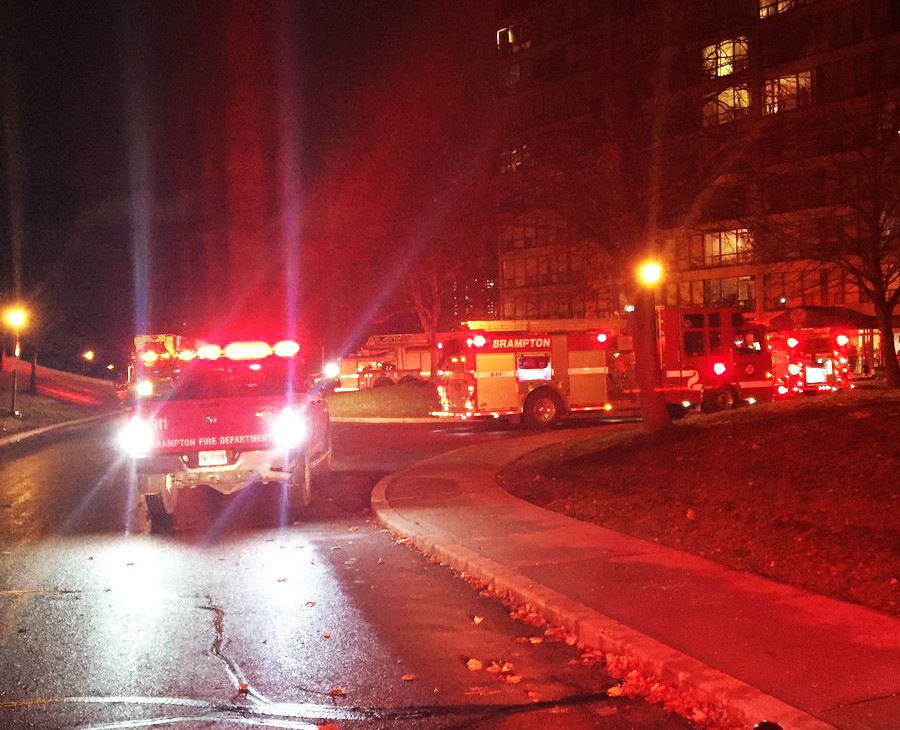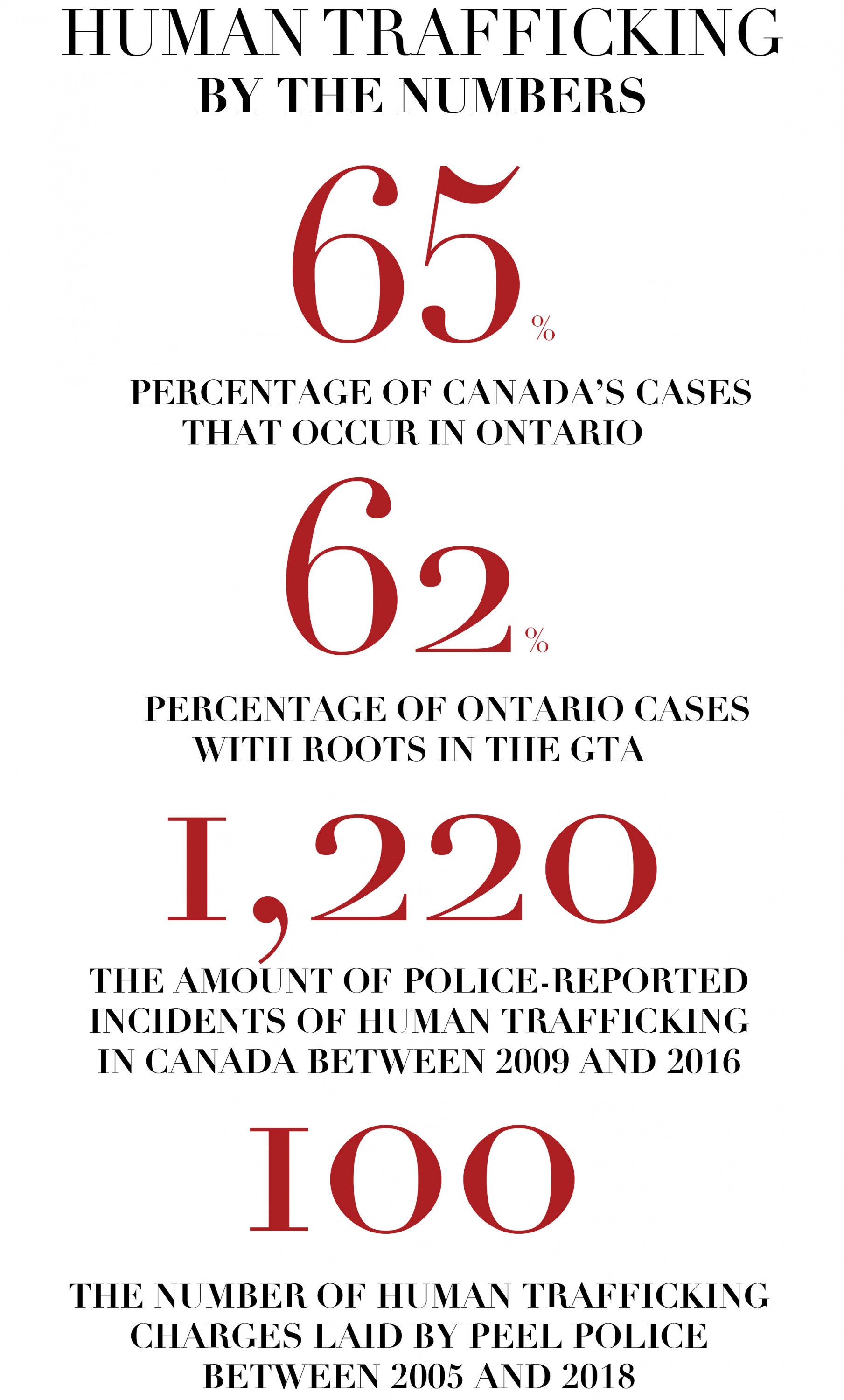
Part 3: In the fight against human trafficking, first responders can play a crucial role
Firefighters and human trafficking, words that not many people put together.
In fact, there’s only one fire department in Ontario that has made such a connection, and their training program received a lot of attention in Mississauga this past June.
For all first responders, working on the front lines when responding to many public needs forces them to handle a growing array of situations. With human trafficking cases increasing across Ontario, those who have the highest likelihood of encountering victims on the street, should be those who are most aware. For firefighters, this isn’t always the case, especially in Ontario. A program in the Niagara Region is looking to change that.
During the Global Conference on Human Trafficking and Trauma, hosted by Family Services of Peel at the University of Toronto Mississauga campus, hundreds of advocates and stakeholders gathered to discuss the growing issue, make connections and to find solutions.
For Krystal Snider, a program manager with YWCA Niagara, and Jeremy Inglis, a deputy fire chief in Fort Erie, the conference was an opportunity to make rare connections that have rarely existed.
During seminars and lectures, Snider says she made several new connections in the human trafficking sphere, one in particular with the University of North Carolina, has already garnered follow-up phone calls to try and sort out potential ways the two institutions can work together.
Of particular interest to many at the conference, was the training program launched by Snider and Inglis. The one-of-a-kind in Ontario program trains firefighters on how to identify signs of human trafficking. The pair are hoping to extend the training to Niagara paramedics in the fall.
“The idea is how to identify it, how to interact with them appropriately so that it’s a very victim-centred and trauma-centred approach to it and from that, depending on the direction that the victim or survivor wants to take, that determines what route we take down the protocol and what agencies we involve at that point,” Inglis tells The Pointer.
The recent conference allowed Snider and Inglis to take their initiative to a wider audience, creating the potential for similar programs to pop up in other jurisdictions.
“We’re way ahead of the curve on this, we’re trying to get more departments. Right now we’re just in the Niagara Region, but we’re trying to get the Bramptons, the Hamiltons, Mississauga, London, Toronto, departments like that on board,” Inglis says.

It seems like an odd connection, but Inglis explains that firefighters can encounter human trafficking victims in a variety of ways, including inspections of local hotels and restaurants, responding to overdose calls: something becoming increasingly common across Ontario with the ongoing opioid crisis, and the frequent encounters firefighters have to deal with in the community.
For Inglis, his first exposure to the world of human trafficking came with a 2012 call for a suicide attempt. A young woman, a victim of human trafficking, had managed to flee from the hotel where her traffickers had held her and jumped off the Niagara gorge. She survived by getting caught in some trees along the cliffside.
“We responded to that and repelled down into the gorge to bring her out and just through that interaction there she started to tell her life story and what she went through and what she was going through,” he says.
“It was a couple years until I learned really what trafficking was, and that’s when I started pushing for the training.”
While the Family Services of Peel event allowed for stakeholders, academics and advocates in the social sector to meet to discuss the issue, the Association of Municipalities of Ontario (AMO) conference, wrapping up today in Ottawa, could be a perfect chance for those in the municipal sector to discuss the issue, and perhaps share ideas and best practices from their cities.
It remains unclear whether any municipal stakeholders have been raising the issue.
For politicians in Peel, the current situation would dictate it be a top of mind concern. In 2016, Ontario accounted for 65 percent of Canada’s human trafficking cases, 62 percent of those cases had roots in the GTA.
For Peel Region, specifically Brampton and Mississauga, that means they are ground zero. Peel’s rate of human trafficking cases is nearly double the national average.
More cases of human trafficking means more survivors to care for, which means more services are required.
As the Family Services of Peel needs assessment on the topic describes, numerous gaps in the system already exist.
“The concentration of human trafficking activity has implications for the sheer number of services that are needed in the Region of Peel,” the May 2019 assessment reads. The study pointed to a lack of housing, healthcare and employment services in particular. “These flaws contribute to women back-pedalling into exploitation,” essentially creating a vicious cycle.
“The idea is how to identify it, how to interact with them appropriately so that it’s a very victim-centred and trauma-centred approach to it and from that, depending on the direction that the victim or survivor wants to take, that determines what route we take down the protocol and what agencies we involve at that point.”
Jeremy Inglis, a deputy fire chief in Fort Erie
It’s obvious from the experience of Inglis and Snider at the Global Conference, that such events succeed in both raising awareness and making essential connections in the industry.
“All I can say, it was the best conference I’ve been to in the anti-trafficking movement to date. It felt like it really just levelled up,” Snider says. “What was unique about that was the public health approach, it was this common knowledge that we can’t arrest our way out of this issue, and that we were looking at systems, there was a lot of research and it was thoughtful and it was survivor-centred.”
At AMO this week, a variety of topics were put on the table. The City of Brampton has made clear it would push for transit, health and infrastructure funding, to name a few areas of focus. While human trafficking is not included on the list, AMO executive director Pat Vanini told The Pointer that it isn’t off the table.
“AMO is an active participant in a multitude of government led discussions on community safety issues,” she said in an emailed response. “Municipal police services, the OPP, and locally delivered community and social services are actively engaged in providing services to those who are victims of exploitation, upholding the law, and addressing the root causes of these crimes.”
Email: [email protected]
Twitter: @JoeljWittnebel
Submit a correction about this story


